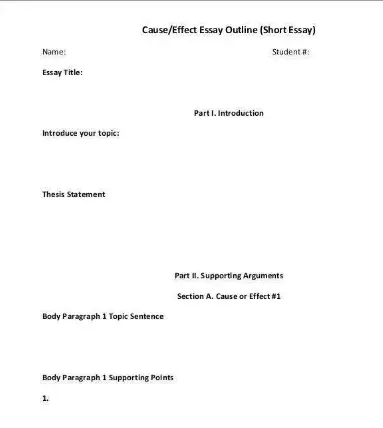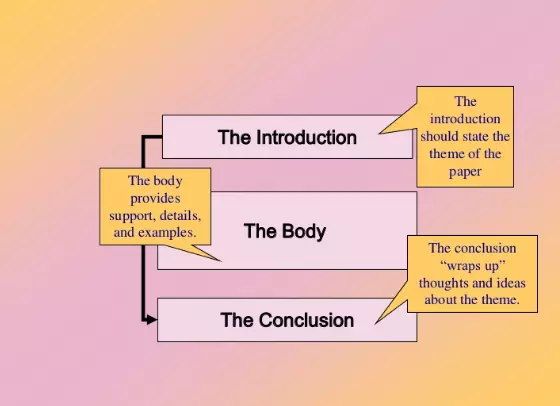How to Write a Short Essay and How Long: And about Anything

A short essay is a piece that you write in brief. Typically, the guidelines for writing such an essay resemble those you use in crafting a long essay. The only difference manifests in length.
When writing a short essay, bear in mind that you have a limited word count. Maximize the chance to include only relevant ideas and words. Such essays cover catchy topics, so ensure they respond to a question or an argument.
How long is a Short Essay?

Most times, a short essay will have a word count of between 300 to 500 words. That alone can take one hour for an experienced writer to complete it.
However, the purpose of a short essay is not to fill pages only but to give the right and quality information.
Many writers would want to use a short essay to access their audience when they lack time to write an extended essay.
For that reason, they make the audience read it by keeping the time shorter while capturing the needed information.
If you are crafting a short answer essay, then it will range from 150 to 250 words. Usually, there is no particular limit for what one can use, hence making some even exceed the guided limit by a few words.
In this case, please read the instructions and implement them entirely to prevent deviation.
People Also Read: Can you Quote Essay Titles: How to use Quotes as Paper Titles
How to Write a Short Paragraph Essay
A short essay is around one to two pages. The page numbers will depend on how you spaced the document. Ensure that this essay answers the question or the assigned topic. When you write a short essay, you should be precise.
Also, you need to grasp your topic well for effective delivery. The following tips are beneficial for your mission:
1. Pick the Research Topic
You have to begin by reading the prompt carefully. After that, identify the topic by underlining the most important parts. When you understand the prompt, you will write the argument effectively.

Whenever you are unsure about the topic, it is essential to consult your instructor. You may receive a wrong credit if the essay fails to respond to the prompt.
When you are writing a brief essay, it is sensible to choose a single argument. It should revolve around one central topic since you have limited space to include secondary topics.
You should opt for a narrow topic to prevent the essay from extending further. Ensure you tailor the essay to the given topic and essay. Brainstorm a few ideas which will spice up your topic.
Perform thorough research by finding more than one research source. That helps you to get enough details to summarize your short essay and deliver quality work. You can visit the appropriate database to find the correct information.
Caution is here. Not every prompt allows you to get information from online sources. In the same vein, let those sites be objective and reliable.
2. Compose the Essay
Before you begin to craft your essay, you should ensure you have facts to write about your topic. In this case, you are writing a short essay that requires preciseness. When you are composing a five paged essay, you can observe the following:
Create an Outline
The purpose of your outline is to assist you in planning what you want to say in every paragraph. Number the paragraphs from one to five and jot down the key phrase that summarizes the section.
Also, write down any secondary source that you will be using in these paragraphs if need be. The lack of creating an outline makes the essay poorly organized.
Write a Thesis Statement
Your short essay needs to have a convincing and arguable thesis statement. This thesis sums up the argument by exposing what you plan to say in the body.
When the thesis is too weak, obvious, or vague, you will have a challenging moment in focusing on the argument around it.
People Also Read: Writing a 400 Word Essay: Length and How to Write It Well
3. Write the Introduction

We always use the introduction part to explain the topic of the essay.
When you begin to write a paragraph, it is vital to make a particular statement concerning the topic. Clarify and sharpen your argument from this introduction.
You should explain the importance of the essay topic to the essay. Also, let the readers access the evidence you intend to use when you are proving the point.
The thesis statement should come in the second or third sentence of your introduction paragraph.
The introduction should not exceed more than 75 words. Please resist the temptation of going poetic in the introduction and make it longer in this case. Furthermore, this introduction should only feature around six to seven sentences.
4. Write the Body of the Essay
You can write three body paragraphs to prove your point. Let every paragraph prove a single idea. You can cite and use quotes when proving your point from primary and secondary sources.
The role of citing your source is to overcome plagiarism. Consult with your instructor to know the type of citation style to employ. You can strengthen the paragraph by adding information from other research sources.
5. Check the Conclusion
The conclusion is the area where you affirm your stand on the already provided points. You have nothing new to present in this section. All one has to do is restart the thesis and state your position on the matter at hand.
Just like the introduction, this conclusion should not exceed more than 75 words so that you remain straight to the point.
The conclusion paragraphs are for the final results. It is the part where you will close the question you raised in the first paragraph. You can use this section to let the reader have a new viewpoint on the current subject.
As you write the conclusion, let the last sentence satisfy the reader. When the reader relates to what you said in the introductory paragraph, he should find a point to agree with what you had been talking about in the body.
6. Proofread your Essay

At this stage, ask a colleague to read your first draft. It is very challenging to spot your own mistakes and spelling errors. Let this colleague offer you constructive criticism by pointing out any part that does not make sense.
Suppose none disagrees with your rough draft; you can reread it and spot any errors that need further clarification. Read it aloud for you to hear how it sounds. This principle exempts the essay written within class time as it will disturb others.
7. Revise and Polish the essay
Revise the rough draft and refine it into the final essay. Here, you should look for ways to strengthen your entire argument. Resist the temptation of fixing only surface errors since submitting unrevised work can compromise your grade.
People Also Read: Essay Writing Titles: Being Creative Without Topic Generators
8. Condense the Essay
You must stay within the word count. You can remove any extra information that is not necessary. For instance, you should eliminate signs of progress, adverbs, and clichés that do not carry any weight.
You can opt to write the sentence into an active void to make it straight to the point. The sentence expresses the idea directly and clearly. When you want to keep the sentencing brief, begin the sentence with the subject or act.
When you are condensing the essay, ensure you present the most relevant details in your essay. Let the information fit into the provided word count to avoid the temptation of going beyond it. After that, you can now submit it to your instructor.
Check out our other guide on how to write long essays to know the direct contrast between writing short papers and the difference between the two.

When not handling complex essays and academic writing tasks, Josh is busy advising students on how to pass assignments. In spare time, he loves playing football or walking with his dog around the park.




